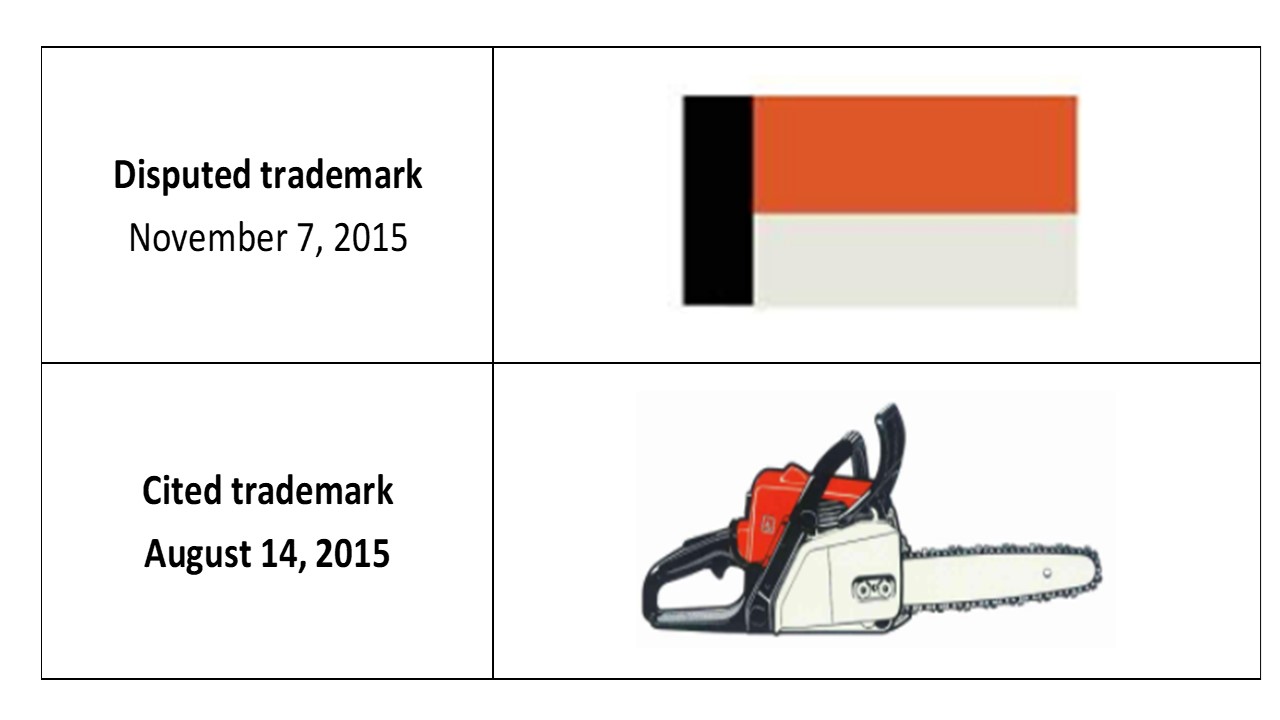Resources
Aug 30,2021
Newsletter n° 17 WHD Case: TM ∣ STIHL successfully invalidates an infringer’s color combination mark
The registration and protection of non-traditional trademark have always been a challenging task for brand owners. Since most non-traditional trademarks are often perceived as being devoid of inherent distinctiveness, brand owners need to provide a substantial amount of evidence to prove that the applied mark has acquired distinctiveness through extensive use.
ANDREAS STIHL AG & CO. KG (STIHL) obtained the registration of the “orange and gray” color combination trademark on goods “chain saws for forestry and horticulture” in August 2015. In January 2019, STIHL further confirmed the protection of this color combination and secured the registration of an abstract trademark showing, in the form of blocks, the two “orange and gray” colors.
However, STIHL was surprised, when taking another infringement action against a repeat infringer, to discover that this infringer submitted as a defense a trademark registration certificate relating to a color combination trademark consisting of orange, gray and black colors. The trademark had been registered on November 7, 2015, in class 7, covering goods including "lawnmowers [machines]; reapers; sprayer (machine); agricultural machines; agricultural implements other than hand-operated; saws [machines]; woodworking machines; tea manufacturing machine; hand-held tools, other than hand-operated; axles for machines.

On November 14, 2019, STIHL initiated an invalidation proceeding with the China National Intellectual Property Administration (CNIPA), against the aforesaid color combination trademark, citing its own prior registration of August 2015. In December 2020, the CNIPA upheld STIHL's grounds and invalidated the disputed color combination mark for the following reasons:
- The CNIPA stated that a color combination is usually perceived by the public as the decoration of a product rather than as a trademark. However, a color combination can be registered as a trademark if it has acquired a sufficient level of distinctiveness through use. In this case, the CNIPA found that the evidence submitted was insufficient to prove that the trademark could be deemed as a source identifier for the registrant' products. The trademark was, therefore, unregistrable for lack of distinctiveness.
- Besides, the CNIPA found that the goods covered by the disputed trademark are similar to that of the cited trademark, and that the color combination itself (orange-yellow, milk white and black), is similar to cited “orange and grey” trademark. Thus, the disputed mark and the cited mark constitute similar marks on similar goods, which violates Article 31 of the Trademark Law.
Wanhuida Intellectual Property represented STIHL in the case.
COMMENTS:
What is intriguing in this case is that the registrability of the disputed trademark had never been challenged by the examiner during the whole registration process. Indeed, in practice, the examiners do not accept a "blank" color combination trademark, without evidence of acquired distinctiveness, and without a statement showing how the applied combination of color is to be applied on the products designated by the application.
In this case, it seems that the filing document of the disputed trademark did not meet the usual requirements for a color combination trademark. According to the Trademark Examination Criteria published by the CNIPA, a trademark application for a color combination must show that the sign has acquired distinctiveness via extensive use and advertising. The trademark description of the disputed trademark only described the colors but remained vague about the manner in which the colors were to be used : "the applied trademark is a combination of orange-yellow (Pantone CIO, M80, Y100, K0), milk white (Pantone CO, MO, Y5, K10) and black (Pantone C75, M68, Y67, K89), which are respectively used for cylinder head cover and air filter cover, rear handle and box body, front handle and brake baffle". However, the application designated a much wider range of goods, and the description apparently failed to show how the colors were to be used on all the designated goods
On July 29, 2019, the European Court of Justice upheld the General Court's decision invalidating Red Bull’s blue and silver color combination marks on the grounds that both marks were not sufficiently "clear, precise, self-contained, easily accessible, intelligible, durable and objective"[1]. Though the CNIPA has exemplified in the “Trademark Review and Adjudication Criteria” factors to be considered in the formality examination of non-traditional trademarks, due to varied understandings of the examiners, it would be worthwhile to introduce such a general principle to help harmonize examination practice.
The invalidation based on the absolute ground of lack of distinctiveness would have been sufficient. Nevertheless, the CNIPA added some comments on the similarities between the cited and the disputed trademarks and stated that the comparison should be made by comparing the ways the colors are combined and used, rather than dwelling on the nuances of the colors. This practice is in line with a judgment made by the Beijing IP Court on October 27, 2019 (Roxtec AB v. Mikael Helmerson)[2], where the court found infringement, despite the fact that the blue color used by the infringer was not exactly identical with that of the cited mark. The court opined that it would be difficult for the relevant public to perceive the nuances when paying an average level of attention.
Authored by Yang Mingming
